Big Screen Experience
The Galaxy Note II has a 1280 x 720 display (down a bit from the first Note's 1280 x 800 display) but it's bigger at 5.5". You're actually getting the same resolution as the Galaxy S III and other high end Android phones, but everything on screen is stretched to fill the bigger display. That means larger web page text that's readable without zooming, and movies that are immersive on the huge display. At 264 ppi pixel density is reduced from the 306 ppi GS III, but the Super AMOLED HD display still looks sharp. Samsung has improved the display to an uneven RGB stripe (bye-bye Pentile Matrix, though this is still not far from Pentile's uneven sub-pixel color stripe). Though the pixel density isn't wildly high, videos and photos look lovely, even if text isn't as razor sharp as on higher PPI phones and tablets. Those of you who read lots of books would probably still prefer higher density displays to the Note II's if you have good eyes. If you don't and thus favor larger text sizes, you'll probably like the Note II better. Color fringing isn't an issue. Colors are very saturated compared to IPS displays, but many folks enjoy lots of color saturation along with the high contrast and deep blacks of Samsung's Super AMOLED HD displays.
Samsung makes use of the big screen and S-Pen with custom software, similar to that found on the Note 10.1 tablet. There's S-Note for note-taking, complete with formula and handwriting recognition. And there's a side-by-side app view for select apps like the web browser, email, S-Note and video player so you can see and use two apps at once. In fact, the window slit is adjustable so you can have the web browser fill 2/3 of the screen and S-Note the remaining 1/3. It's a brilliant use of the big display, though it still makes most sense with 10" tablets. As of this writing, the T-Mobile, Sprint and Verizon models have the side-by-side app feature, and AT&T should offer it as an OTA update soon. Lastly, Samsung's flashy floating video player is on board, so you can play a video in a resizable, transparency-adjustable window on top of any app or the home screen.
Since many other Android smartphones are encroaching on the Note II's big screen act, the software and S-Pen are important pieces that set the Note II apart from the competition. But what if you don't find split window view enticing or perhaps you don't have a need for the digital pen, there's the 4.8" Samsung Galaxy S III, 4.7" HTC One X and One X+ and the big screen LG Optimus G. Is there a place for the Galaxy Note II? For those who love a big screen for larger text and for watching videos, the answer is certainly yes. But for many folks, the more pocket and hand friendly 4.5" to 4.8" smartphones running at the same resolution will do the trick for less money and pocket real estate. The Note II, unlike the first Note, is no longer the highest resolution smartphone, and other smartphones have encroached on the original Note's screen size. Who's the current resolution leader? The HTC Droid DNA on Verizon with a 5", 1920 x 1080 Super LCD3 display.
Call Quality and Data
As noted, the Sprint, AT&T and Verizon versions have 4G LTE, while the T-Mobile version (coincidentally the closest to the international version) has HSPA+, which is technically a very fast flavor of 3G, though both T-Mobile and AT&T call it 4G as well. Why doesn't T-Mobile's Note II have LTE? Because that carrier currently lacks an LTE network. The LTE versions provided the expected upload and download speeds compared to other smartphones on their respective networks. T-Mobile's version did as well as their other HSPA+ handsets, which is quite good in the Dallas area, and sometimes as fast as LTE. Sprint's LTE network is in its infancy, but we're among the first markets here in Dallas, and we saw download speeds of 9 Mbps and upload speeds of 3 Mbps on average. AT&T has the fastest data network in our area, and we averaged 19 Mbps down and 6.8 Mbps up. Verizon answered with 12.6 Mbps down and 5.1 Mbps up. All four variants have the mobile hotspot feature, so you can use the phone as a high speed wireless modem for your tablet or laptop (depending on your data plan). Web pages load very quickly and Google Play Store downloads are fast.
Voice quality on all four variants is very good for both incoming and outgoing voice. Calls sound clear and our call recipients and we could easily understand each other. The phone played nicely with our car's built-in Bluetooth and a variety of Motorola, Samsung and Jawbone Bluetooth headsets. Given the phone's size, it's likely you'll want to use a Bluetooth headset.
Horsepower and Performance
The smartphone runs on Samsung's powerful 1.6GHz quad core Exynos CPU with MALI 400 graphics. It eats up benchmarks, it laughs at 3D tests. The Note II scored 6,001 on Quadrant, which is faster than older Tegra 3 models and it only falls slightly behind Qualcomm's S4 Pro quad core CPU and more than slightly behind the newer Tegra 3 in the HTC One X+. On GLBenchmark 2.5 it beats everything except the HTC Droid DNA. This Android smartphone won't feel slow a year into your contract.
Benchmarks
| |
Quadrant |
GLBenchmark 2.1Egypt Offscreen |
AnTuTu |
Sunspider JavaScript Test |
| Samsung Galaxy Note II |
6860 |
66 pfs (v.2.5 used) |
17,367 |
1052 |
| LG Optimus G Pro |
11,994 |
28 fps (GLBench 2.7 used, so results are lower) |
18,561 |
867 |
| Samsung Galaxy S4 |
12,276 |
41 fps (GLBench 2.7 used, so results are lower) |
24,776 |
826 |
| HTC Droid DNA |
7823 |
78 pfs (v.2.5 used) |
14,578 |
1146 |
| LG Optimus G |
7235 |
59 pfs (v.2.5 used) |
11,087 |
1289 |
| HTC One X+ |
7591 |
52 pfs (v.2.5 used) |
16,111 |
1029 |
| HTC EVO 4G LTE |
5086 |
56 fps |
7001 |
1650 |
| Motorola RAZR HD |
5055 |
51 fps |
6760 |
1862 |
| HTC One X |
5001 |
56 fps |
7074 |
1617 |
| Samsung Galaxy S III |
5102 |
51 fps |
7011 |
1825 |
Camera
Like the Galaxy S III, the Note II has an identical 8 megapixel camera that can shoot 1080p video. We still noted some exposure issues in bright outdoor shots where the camera rendered hazy images, but the new HDR feature helps greatly with that. Dedicated image processing chips are the next big thing in high end phones (the HTC One X has one too), and that allows for extremely quick shot times. Again, like the Galaxy S III, HTC One X and HTC One S, you can shoot photos while simultaneously recording video but there's no slow motion option like that of the One X and One X+. There are plenty of effects to play with: exposure, macro mode, face detection, smile detection and panorama. This is a very capable camera.
Video quality is excellent at 1080p and 30fps: video is sharp and colorful with smooth motion and little in the way of blockiness. The continuous autofocus sometimes hunts when several subjects are in motion at once, but overall it's great stuff.
Conclusion
As with the first generation Samsung Galaxy Note, if you don't mind a very large phone and your use tends more toward web, email and video rather than calling, the Samsung Galaxy Note II is a unique cross-over phone that works both as a small tablet and a phone. It's not eminently pocketable, nor is it easy to use with one hand, but nothing beats the big screen experience when watching videos or surfing the web without panning and zooming. Our dream? The Note II with the screen quality of the HTC One X+ and the iPhone 5!
Price: $299 on most carriers with contract (higher on T-Mobile)
Website: www.samsung.com |
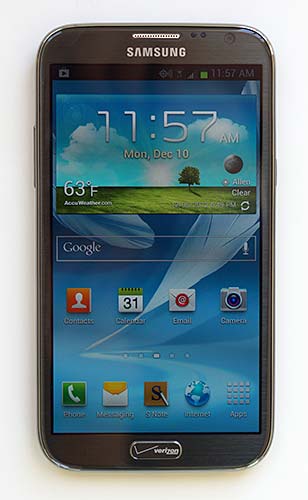
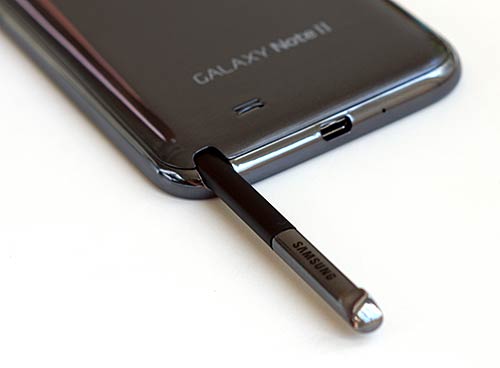
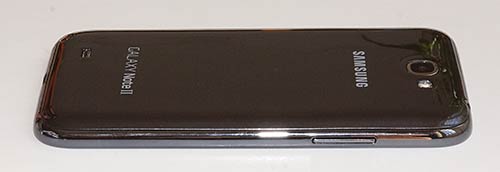
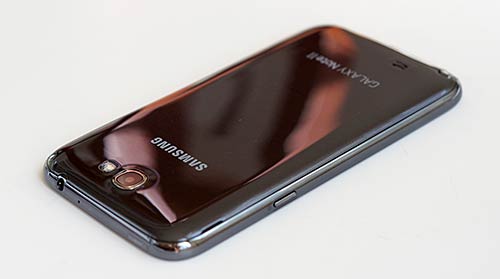
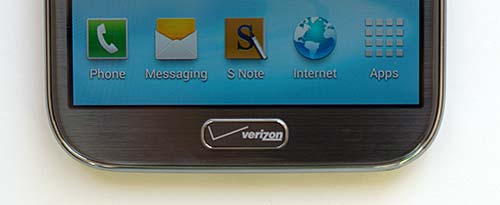
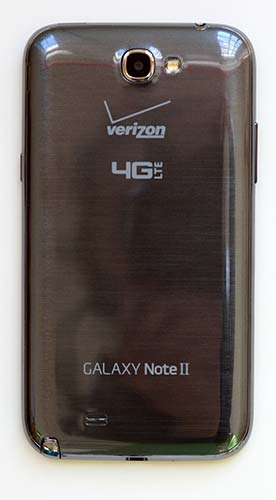
|

